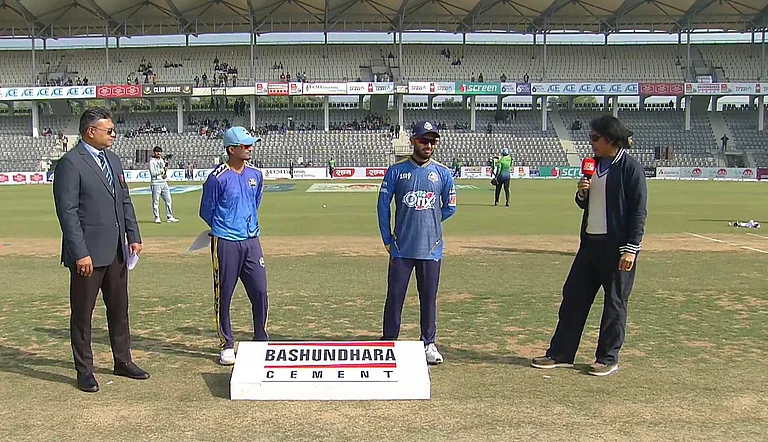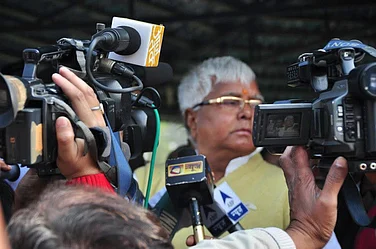Around 11.30 pm that night, 12 vehicles and five armed platoons of the state police led by the Khurda collector and SP descended on the town to take the leaders into preventive detention. Their aim: to prevent violence and defuse the growing fishermen-gheri owner tension. But when they finally left at 2 pm, they'd fired 20 rounds, leaving three dead, 22 injured.
In a fatal error of judgement, the district authorities had not gauged the fishermen's mood nor expected resistance. Their raid to arrest 20 leaders from Sorana was intended to take the fishermen unawares and bring the sober element to the negotiating table. The demolition at Hatabaridi a day ago had already triggered off a near battle between the belligerent gheri owners and Jayantipur fishermen. A platoon of police had been posted.
But the way the raid was conducted-at midnight, when power and phone lines were down-aroused the fishermen's suspicions. They feared the police would "do away with their leaders in connivance with the prawn mafia". As word spread to surrounding areas, the mob swelled and soon human chains and laterite blocks were set up. An angry crowd clashed with the police which had to fight its way out. It first lobbed tear gas shells, then wielded batons. Finally they fired. Among the dead and injured were women and children.
The government acted promptly, suspending six officers, including district collector Sarbeswar Mohanty and SP S.S. Hansdah. The Khurda sub-collector and revenue divisional commissioner were transferred. It called for an immediate review of its Chilika policy; promised demolitions in a week.
It had to happen. The fishermen and non-fishermen of 145 villages in and around Chilika were locked in a do-or-die battle for the last four years. Matters came to a head this April when, fed up with the inaction of authorities, the Mahasangh began issuing ultimatums and the fishermen threatened to take the law in their hands. After a series of meetings, they poured into Puri's Krushnaprasad area on April 28 and demolished some gheris. Sixty-five persons were arrested and released on bail. It didn't help matters when local politicians stepped in.
When the clash between fishermen and non-fishermen led to loss of crores of property, Congress legislator from Bramhagiri, Lalatendu Bidyadhar Mohapatra, came out strongly in favour of prawn farmers. He demanded cancellation of leases to primary fishermen societies who had "illegally subleased their fishing rights". Meanwhile, backed by influential politicians and bureaucrats, many of whom are said to be involved in benami transactions in the prawn trade, gheriwalas were sitting pretty.
The district administration first agreed to begin demolitions from April 29. The Mahasangh was assured that by May 5, Khurda would be cleared of illegal gheris, followed by Puri from May 5-15. Several unauthorised gheris around Chilika in Ganjam district were demolished earlier. However, after token activity for two days, such demolitions came to a halt. The district administration pleaded helplessness claiming it did not have the specialised labour force or police backup to undertake such activity.
Gheri demolition calls for skills only local fishermen have. Bamboo poles have to be dug up and nets slashed underwater. Though the Mahasangh had earlier provided labour for this, its men withdrew once they found the administration was targeting only "unauthorised gheris". The state government had granted leases for prawn culture to a number of fishermen and non-fishermen in keeping with its Chilika policy.
This policy was based on a '93 high court verdict that distinguished between 'capture and culture' fishery. Though the court strongly criticised the politician-bureaucrat-prawn mafia nexus, for practical purposes it asked the state government to demarcate 'capture and culture areas' on a 60:40 basis. The entire water area of Chilika-covering some 87,000 acres-was split up, with 47,000 acres for capture fishermen; the rest divided between culture fishermen and non-fishermen. Leases were granted to primary societies. Thus began a long battle.
The SC's 1996 verdict only rejuvenated the Mahasangh and it once again clamoured for complete demolition of gheris. It had reason. While the Chilika prawn-which according to traders has a high export demand-nets crores, the locals' catch has been diminishing. Gheris circle Chilika up to 20 km including its mouth and the use of the banned zero nets ensures every kind of marine life is trapped. Where a country boat made a catch of 10 to 20 kg and earned up to a monthly Rs 3,000 earlier, today even with motor boats hardly five to six kg is netted.
As subsistence fell, discontent rose. On last Sunday, it spilled over. It came at the worst possible time for the Gamang government which has just completed 100 days in office. With Lok Sabha elections due, opposition parties will make Chilika a major issue. The government has mooted a five-point policy on Chilika based on the apex court verdict. But the damage may already have been done.























